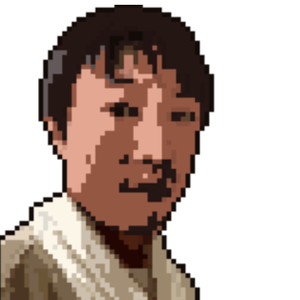Section B
Directions: In this section, you are going to read a passage with ten statements attached to it. Each statement contains information given in one of the paragraphs. Identify the paragraph from which the information is derived. You may choose a paragraph more than once. Each paragraph is marked with a letter. Answer the questions by marking the corresponding letter on Answer Sheet 2.
Stop thinking and start doing
A) Most people have a dream in life, a vision of who or what they’d like to be in the future. At a minimum, everyone has interests and values that determine what they want out of their lives. Even so, trying to set achievable goals that you’ll work for over the course of many years can be extremely challenging. It can be hard to know where to even begin, and the things you hope to achieve may seem impossible. But, if you’re well prepared you may be able to set goals for your life that are just as fulfilling to work toward as to achieve.
B) We all have goals that we want to achieve in our lives. These goals may include learning a new language, eating healthier and losing weight, becoming a better parent, saving more money, and so on. It can be easy to assume that the gap between where you are now and where you want to be in the future is caused by a lack of knowledge. This is why we buy courses on how to start a business or how to lose weight fast or how to learn a new language in three months. We assume that if we knew about a better strategy, then we would get better results. We believe that a new result requires new knowledge.
C) What I’m starting to realize, however, is that new knowledge does not necessarily drive new results. In fact, learning something new can actually be a waste of time if your goal is to make progress and not simply gain additional knowledge.
D) It all comes down to the difference between learning and practicing. Thomas Sterner, in his book The Practicing Mind, explains the key difference between practicing and learning. He says: “When we practice something, we are involved in the deliberate repetition of a process with the intention of reaching a specific goal.” Here the words “deliberate” and “intention” are key, because they define the difference between actively practicing something and passively learning it.
E) Learning something new and practicing something new may seem very similar, but these two methods can have profoundly different results. Here are some additional ways to think about the difference. Let’s say your goal is to get stronger and more fit. You can research the best instructions on weight lifting technique, but the only way to build strength is to practice lifting weights. Let’s say your goal is to grow your startup. You can learn about the best way to make a sales pitch, but the only way to actually land customers is to practice making sales calls. Let’s say your goal is to write a book. You can talk to a best-selling author about writing, but the only way to become a better writer is to practice publishing consistently.
F) Passive learning creates knowledge. Active practice creates skill. Let's consider a couple more reasons to prioritize active practice over passive learning. First, passive learning can be a stick that supports inaction. In many cases, learning is actually a way to avoid taking action on the goals and interests that we say are important to us. For example, let's say you want to learn a foreign language. Reading a book on how to learn a foreign language quickly allows you to feel like you are making progress (“Hey, I’m figuring out the best way to do this!”). Of course, you’re not actually practicing the action that would deliver your desired outcome (speaking the foreign language).
G) In situations like this one, we often claim that we are preparing or researching the best method, but these rationalizations allow us to feel like we are moving forward when we are merely spinning our wheels. We make the mistake of being in motion rather than taking action. Learning is valuable until it becomes a form of procrastination (拖延).
H) Another point to consider is that practice is learning, but learning is not practice. Passive learning is not a form of practice because although you gain new knowledge, you are not discovering how to apply that knowledge. Active practice, meanwhile, is one of the greatest forms of learning because the mistakes you make while practicing reveal important insights.
I) Even more importantly, practice is the only way to make a meaningful contribution with your knowledge. You can watch an online course about how to build a business or read an article about a terrible disaster in a developing nation, but that knowledge is unproductive unless you actually launch your business or donate to those in need. Learning by itself can be valuable for you, but if you want to be valuable to others, then you have to express your knowledge in some way.
J) The last important point to consider is that practice focuses your energy on the process. Thomas Sterner once said, “Progress is a natural result of staying focused on the process of doing anything.” The state of your life right now is a result of the habits and beliefs that you have been practicing each day. When you realize this and begin to direct your focus toward practicing better habits day-in and day-out, continual progress will be the logical outcome. It is not the things we learn nor the dreams we visualize that determine our results, but rather the habits that we practice each day. Fall in love with boredom and focus your energy on the process, not the product.
K) What does this all mean? Is passive learning useless? Of course not. In many cases, learning for the sake of learning can be a beautiful thing. Not to mention that soaking up new information can help you make more informed decisions when you do decide to take action. That said, the main point of this article is that learning by itself does not lead to progress. We often hide behind information and use learning as an excuse to delay the more difficult and more important choice of actually doing something. Spend less time passively learning and more time actively practicing. Stop thinking and start doing.
- 36
- 单选题
- 分值:7.1
Acquisition of new knowledge may not guarantee the progress that you aim to make.
- 37
- 单选题
- 分值:7.1
Your current situation in life is built on the beliefs and habits you have been practicing daily.
- 38
- 单选题
- 分值:7.1
Knowing the best way to learn a foreign language will not enable you to speak it without actual practice.
- 39
- 单选题
- 分值:7.1
People may find it demanding to create a goal which will take a long time to achieve.
- 40
- 单选题
- 分值:7.1
Learning and practicing seem to be very much alike, but the two processes can lead to quite different outcomes.
- 41
- 单选题
- 分值:7.1
Absorbing new information is helpful in making better decisions prior to action.
- 42
- 单选题
- 分值:7.1
Sometimes we may feel like we are making progress by doing some research or making preparations, but actually we are staying at the starting point.
- 43
- 单选题
- 分值:7.1
We are inclined to think that a lack of knowledge prevents us from advancing to a better future.
- 44
- 单选题
- 分值:7.1
Learning can benefit you by itself, but only practice can turn what you learn into meaningful contributions.
- 45
- 单选题
- 分值:7.1
Practice involves repeating a process intentionally to attain a particular objective.
留言数:0



